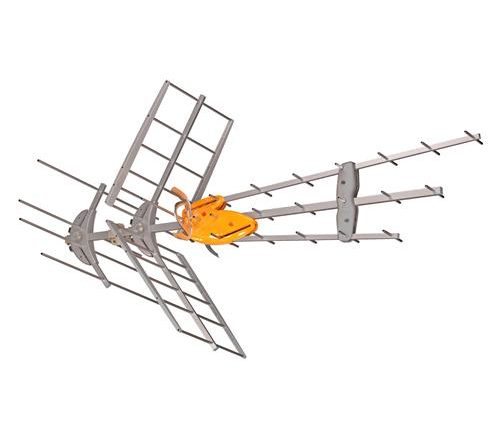Cord cutting can seem pretty overwhelming, especially to the uninitiated. Not only are you ditching the familiarity of cable and your DVR, but there are also so many options for getting entertainment. Unless your budget is unlimited, you’ll need to pick and choose your services carefully or run the risk of exceeding your old cable bill.
To help you get started, let’s go through some common questions you might have about how to prioritize your cord-cutting entertainment.
Should You Buy an Antenna?
Antennas are generally recommended for cord-cutters for two reasons: they’re cheap, and they allow you to get a number of basic channels without needing a cable subscription. It almost feels like cheating.
There are a few kinds of antennas to choose from, but they all do basically the same thing—pick up over-the-air (OTA) broadcasts and send them to your TV. The real trick with antennas is positioning. Finding the right spot to mount the antenna can make a world of difference in signal quality.
Do You Still Want Access to Live TV?
When you’re cutting the cord, one of the biggest questions you’ll need to ask yourself is whether you still want access to live TV. If you do, a basic Hulu or Netflix subscription isn’t going to cut it. There are ways to get access to live programming without cable, but you’ll need to plan for it.
Hulu has a live TV plan that might work for you. Sling TV also offers live TV in a format similar to cable but streamed over the internet. You can also grab an antenna and pick up OTA channels broadcast in your area, as mentioned above.
Is Your Internet Fast Enough?
This is a crucial consideration for new cord cutters, especially for those who opt for cable replacement strategies that involve streaming. If your internet connection is too slow, you won’t have a good experience, and you’ll be running back to the cable company before you know it.
So how much speed do you need? Well, it depends.
Streaming itself actually doesn’t require as much bandwidth as you might think. What starts to push the speed requirements up are HD video and multiple simultaneous users. HD video—and especially 4K, which is becoming more popular—rapidly cranks up the bandwidth requirements, and you’ll need to multiply that requirement by the number of devices likely to be streaming at once to get the best performance. Here’s a chart of basic internet speed requirements for streaming different resolutions:
| Recommended Speed | Video Resolution |
| 3 Mbps | Standard Definition (480p) |
| 5 Mbps | High Definition (1080p) |
| 25 Mbps | Ultra High Definition (4K) |
Do You Need a DVR?
Did you know that you can still have a DVR without a cable subscription? There are actually some really solid options out there, like the TiVo Roamio, that allow you to record OTA broadcasts. The Roamio also functions as a streaming box, making several popular streaming services accessible through one convenient device.
If you’re not into TiVo, there are other options—some streaming services offer DVR functionality, for instance—but keep in mind that most will require you to pay an additional fee.
What Specific Content Is Most Important to You?
Streaming services aren’t all created equal, so you need to decide what content you can’t do without. Want a variety of live TV channels? Sling TV or Hulu’s live TV offering might be perfect. Prefer movies and original shows? Netflix or Amazon Prime Video may be your best bet. It’s also possible to get HBO and other premium channels a la carte these days.
Again, though, watch the pricing on those plans—adding three or four different services gets expensive quickly. If possible, try to pick one primary service that covers most of your needs and one secondary service that covers any fringe uses you might have. That way you can get the channels and shows you want on the most reasonable budget possible.
Having a great cord-cutting experience doesn’t have to be complicated—it’s just a matter of setting priorities. The info here should get you off to a great start.





